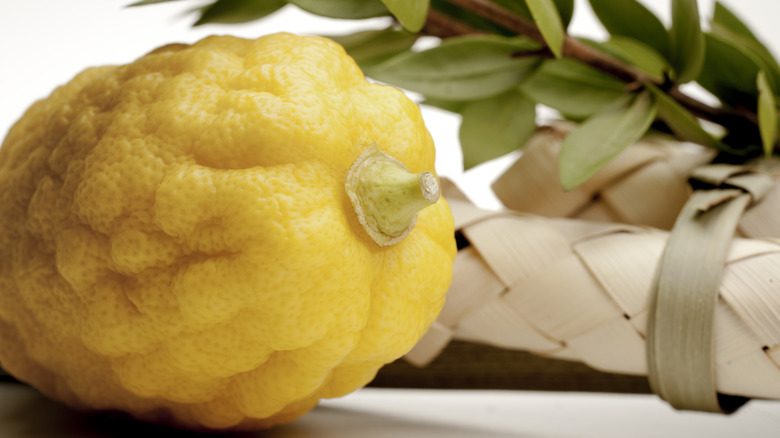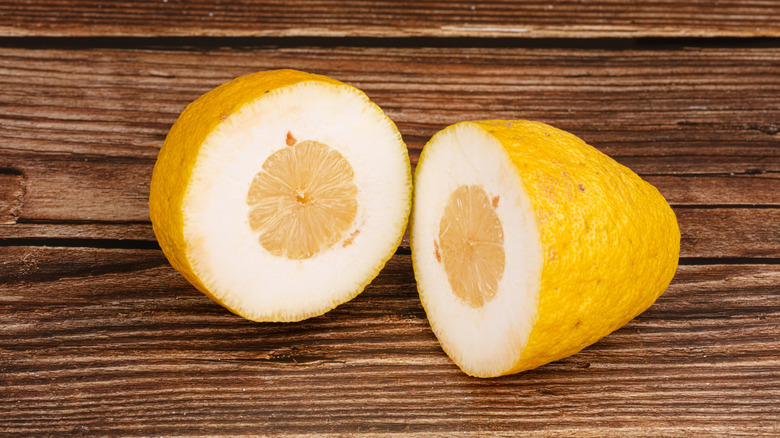The Significance Of The Etrog (Citron) During Sukkot
The Jewish harvest festival Sukkot dates back to pre-Biblical times, and the etrog, also known as citron, has played a significant role in its celebrations throughout history. This is because ancient scholars interpreted it as being referenced in Leviticus 23:40, where the Torah speaks of "fruit of goodly [or, depending on translation, beautiful, splendid, or majestic] trees." The commandment is to take that fruit, along with myrtle boughs, palm branches, and willows, and use them in a religious ritual. Together, these items are known as "arba'ah minim" or four species.
While the Torah doesn't specify exactly how the four species are to be used during the Sukkot ceremonies, over the centuries a specific ritual has evolved in which the tree branches and boughs are to be carried in one hand in a purpose-built holder while the etrog is picked up with the other hand. As a special blessing is recited on each of the seven days of Sukkot, all of these items are waved in the air, and after the prayer they are shaken towards each of the four points of the compass. Not only does it count as a mitzvah to include the etrog and the other three species in the ceremony as this fulfills a divine commandment, but the fruit also serves as a symbol of perfection and a representation of the human heart and waving it during prayer serves as a metaphor for giving one's heart over to God.
The etrog can also be used for cooking
Some may toss out the etrog once Sukkot is done, since the fruit, while sturdy, isn't going to last for an entire year, plus the ritual demands that it be fresh. The fruit is far from inedible, though, so it can be put to use in cooking. In fact, doing so may even have religious significance for some, since the Talmud advises that pregnant women eat the etrog to impart virtue to their unborn offspring.
One way to make use of an etrog is to use it to make marmalade –- try swapping it out for one of the oranges in our orange marmalade recipe. You can also make candied citron by chopping and blanching the etrog, then simmering it in sugar syrup the same way you would make candied orange peels. With a citron, though, you can use the whole fruit since it's a lot less juicy than an orange and the pith doesn't tend to be as bitter. In fact, the unusually shaped tropical fruit known as Buddha's hand or fingered citron is a variety that's almost all rind. If you can squeeze any juice out of your etrog, however, you can use this instead of lemon juice to flavor cakes or cookies, while the grated rind can replace the zest of a different citrus fruit.

